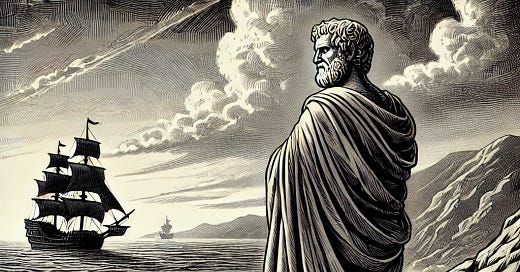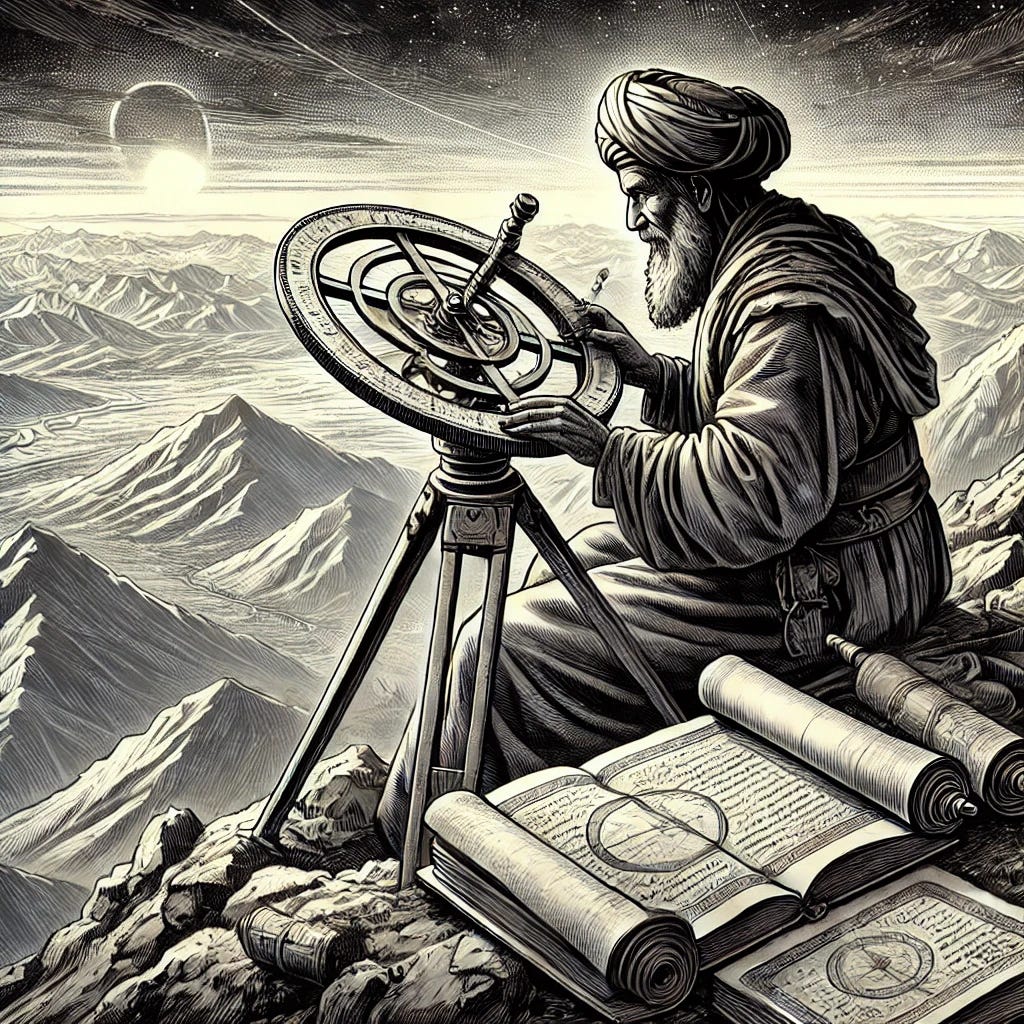Aristotle watched another ship sail over the horizon. His mind turned over the collective evidence carefully.
There was the shadow cast by the Earth on the Moon. The shadow was circular, and you’d expect a circular shadow from a spherical object. Besides, his mentor Plato had taught him that spheres were the perfect shape, so naturally the Earth would aspire to be spherical.
Aristotle also knew that ships saw star patterns change as they sailed north or south. Everyone could watch the stars spin around the planet every night, with a predictable pathway going from east to west, but if you traveled north or south, you started to see completely different stars.
In another timeline, this observation might have led Aristotle to conclude that the Earth rotates along an east-west axis, but the geocentric model of the Solar System, it was a first principle that the Earth was in the center. It would take nearly 2000 years for Galileo to observe moons going around Jupiter before the Copernican model finally took hold in the public mind.
So close! Even still, Aristotle’s thinking ultimately led a fellow by the name of Eratosthenes to deduce an awful lot from very little data. Remember that observation about latitude, and how going north or south changes the star patterns?
Well, the Sun is a star, too. Like those other stars, it travels predominantly along the east-west axis, at least from our Earth-bound perspective.
Eratosthenes knew that when the summer solstice happened—the longest day of the year—the Sun would be directly overhead in the city of Syrene, located in Egypt. This meant no shadow would be cast by a pole stuck in the ground at the bottom of a well.
By contrast, at high noon in Alexandria, there was a shadow. By measuring the angle, he determined a rough estimate for the circumference of the Earth, and he got remarkably close, all things considered. He got within a few percent of the correct answer.
Here’s Carl Sagan’s delightful telling of this classic story:
For another thousand years or so, Eratosthenes’s guesstimate was the gold standard for accuracy. It wasn’t until Islamic Golden Age scholar and polymath Al-Biruni used trigonometry to get a much better answer.
First, he determined the height of a tall mountain with clever trigonometry and carefully calibrated scientific instruments. Al-Biruni measured the length of a long distance down on the surface, and he measured each of the angles up to the top of the mountain from the ends of this baseline. This was enough to calculate the height.
Then, he went to the top of that same mountain, where he used an astrolabe—a device specifically designed to study distant objects and calculate angles—to measure what’s called the dip angle of the horizon. This just meant creating two imaginary lines coming out of the horizon off in the distance. One line connected to the mountaintop, and the other connected to the ground at the bottom.
This was a really big triangle. Al-Biruni reasoned that, since the Earth was spherical, the horizon should dip below the horizontal line at the top of the mountain. The steeper the dip, the smaller the Earth would need to be. His calculation of the circumference of the planet was even closer than Eratosthenes’s had been.
When Columbus set sail for Japan in 1492, he expected an Earth that was about 25% smaller than it really was. That’s largely because of Columbus’s cherry-picking through the existing data, even selecting earlier Greek sources like Ptolemy—even though later evidence was far more accurate and more widely accepted.
Soon thereafter, Ferdinand Magellan’s fleet proved that the earth was round by sailing all the way around it. Their fleet of ships departed with 270 men in 1519, and it returned in 1522 with 18 men left alive (not including Magellan), all on one ship. The voyage was devastating for the crew, but now humans had traveled all the way around the Earth for the first time.
While Eratosthenes, Al-Biruni, and Magellan were all satisfied with a ballpark figure, today’s Earth’s circumference is measured in centimeters, not miles. We can now look at the planet from space, using precise atomic clocks and triangulation of satellites to get an amazingly accurate measure of how far around it is.
We can even track gravitational fluctuations and anomalies, along with very subtle changes in the shape of the planet. The moon pulls on the Earth just a bit, forcing a very slightly cigar-shaped distortion in the planet that we can measure with great precision.
I’m frequently astounded in thinking back to those earliest estimates, and how we’ve insisted on refining it from there over thousands of years.






Great, another "The Earth Is Round" conspiracy wacko. We all know Earth is a bagel.
Uuuuuhm, bagels.
Great post!